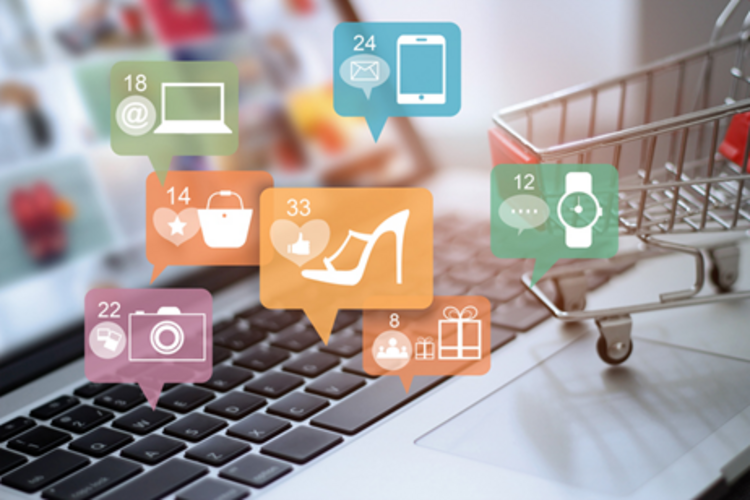We continue our series on trends and talking points from FMCG and retail leaders in the Freshminds network, with this article diving into the online/offline (O+O) experience.
Authored by Henrietta Bamford, this piece includes comments and opinions from ten senior managers and consultants, working in retail or FMCG.
To read the first in the series, covering the Evolution of Customer Data in Retail, click here.
Insight tells us that the global customer experience management market was estimated to be worth USD 11.4 billion in 2023 and is projected to reach USD 20.4 billion by 2028.
Freshminds interviewed ten retail and consumer experts – clients and experienced consultants - asking where in the market brands are enhancing customer experiences, both online and offline, to secure greater retention.
Of course, answers varied depending on whether a business predominantly sold online or offline. Interestingly, there was a prevailing view that companies need to do a lot more to combine their online and offline strategies in order to secure customer loyalty.
There are four components that make up customer experience: brand, product, price and service. This 4-component model, and insight from our interviews, has been used to track how businesses are currently addressing gaps in their customer experiences - and the challenges involved when attempting to combine their online/offline experience models.
Online approaches to brand, product and price enhancement
A typical approach to assess the success of an online offering is to measure the correlation between brand awareness and purchase conversion.
We spoke with the Head of Strategy at a leading health and beauty company. For any awareness problem, he said that understanding ‘brand’ and where in the marketing funnel it needs the most attention is key. Considering which platform to use and where or when to place ads for the highest click rate is critical.
When there is a risk of gaps in the funnel, businesses need to be able to identify and address these very quickly, mindful of the fickle nature of online customers.
Freshminds has seen an increasing level of demand for commercial analysts who specialise in aggregating customer data from social media platforms. This highlights where in the market businesses are prioritising resources for improving brand awareness, and therefore customer experience. It’s clear that being able to quickly analyse key data metrics allows companies to make more data-driven decisions and plug gaps in their online profiles. Agility is key.
For a conversion problem, companies should always question why customers are considering the product or service, but then going elsewhere to purchase.
A General Manager for an international online gifting business explained that enhancing their ‘price’ component is a crucial tool for them. Much of what their customers experience is receiving bespoke membership pricing to persuade them to buy in a way “that makes them stickier”.
This organisation has also recently been enhancing its product through an app, as it hugely outperforms the website for conversions. One example was launching a QR code feature last year that delivered a personalised voice message when opening the gift.

Offline approaches to enhancing experience and stickiness
An Accenture Director puts it simply:
“When you’re in-store, and the location and products are accessible, customers are far more likely to find what they need and buy it then and there”.
In-store conversions have always been higher than online for this reason, and so it’s important that in-store experiences align with a brand’s core promise and values.
But this typically requires large investment, which presents a challenge for smaller companies without the means to buy prime real estate or afford expensive renovations. Multinational brands, on the other hand, have built the scale to deliver enhanced experiences in-store that are deeply aligned with their brand.
New Look, for example, recently invested £3.3m into its flagship Manchester store. They said a “significant part” of this investment will go towards boosting an in-store experience that better aligns with the retailer’s “brand identity’”.
A former consultant for M&S referenced one of their biggest capital expenditure projects last year as their in-store “rotation and renewal programme”. They reduced their Clothing & Home selling space by c.20% and increased the Simply Food retail space by 10-15% in high-growth locations.
This was predicted to double sales and pay back investment within 4 years. Through this programme, M&S was able to carry out significant renovations across regions that catered to the ‘larger family shopper’, enhancing their brand and driving revenue.
For smaller businesses, strategies focused on service can be a more affordable and quicker solution to enhancing in-store experience and differentiation. A client from a small furniture company told Freshminds that they believe “it’s all about the people” when it comes to outperforming their competitors and beating new technology.
The business “constantly seeks to improve colleague morale so that they transmit a positive energy to customers”. This client said he believes human interactions will always win out over tech. Getting hiring, recruitment, training recognition and rewards in order will deliver excellent customer service, an improved consumer experience, and loyal customers.
The Operations Director of a global restaurant group explained that their in-store interactions go far beyond the culinary dishes they sell. It covers the packaging they use, the purchasing experience they offer, the locally sourced paintings, music, curated props and decorations. They view customer service to be a lot broader than what may usually be perceived.
Coca-Cola for example, has broadened the spectrum of what entails customer experience by looking at delivering a circular use of packaging and providing “refillable stations” in stores as a way of not only innovating the product but reinventing the way the product is being purchased. This change integrates Coca-Cola’s brand, product, pricing and service, while also being more sustainable for the retailer and consumer.
Clearly, brands are having to break the boundaries of what has traditionally been a rigid formula for customer experience and success.
Integration in the future?
An ex-McKinsey consultant, who also worked at BCG in their Digital Ventures division, said that corporations who can track customer “behaviour metrics from online patterns” and apply them to “in-store strategies” will win out.
Taking M&S as an example again, the business has a Scan & Shop app that allows customers to buy products within seconds. Online and offline shopping behaviours are still mainly managed separately, which is a glaring strategic shortcoming. If the full understanding of a customer’s online journey fed into the in-store ‘Scan & Shop’ functionality, for example, the customer’s whole experience would be significantly enhanced.
A Director at Accenture noted that there are still so many functionalities you can use online that are not available in-store. If you’re buying electrical goods in Currys, up-to-date customer feedback and reviews will be far more valuable at the point of sale, yet reviews are still not commonly accessible on the shop floor. It remains a totally separate experience that in-store shoppers can’t access.
The problem is that what you’re left with are two very different customer propositions that don’t match how the customer truly interacts with brands at multiple touchpoints.
Some retailers are recognising that combining online and offline systems and journeys will lead to more customer stickiness. New Look, for example, will soon be offering a more tailored product approach by region, and host interactive displays to showcase online exclusives.
Without combining the online/offline experiences, it may soon be difficult to fulfil all the different customer missions. This is because retailers will never be able to accurately track all of the interactions a customer has with a product or service across their journey with the brand.
Combining the separate online/offline customer journeys will not only improve the experience, but it will significantly improve operational efficiencies with better inventory management and footfall traffic/POS data. Online customer data can contribute to better sales predictions because businesses can, for example, get a better understanding of peak hours or popular online products leading to the most visited sections in store.
Conclusion
Acquiring online customers with developing e-commerce platforms was previously far less complicated than it is today, in a more saturated and competitive market. In-store, securing loyal customers remains more economically efficient (subject to the finite level of capital investment) because conversion ratios are much healthier.
However, as the spectrum of a customer’s experience becomes broader and more complex, many in-store brands are beginning to invest in integrating their online/offline strategies to keep their customers engaged throughout their journey.
By Henrietta Bamford
To talk to our Consultants on demand team about sourcing interim talent in data analytics, strategy, digital transformation and other roles: marketing@freshminds.co.uk







